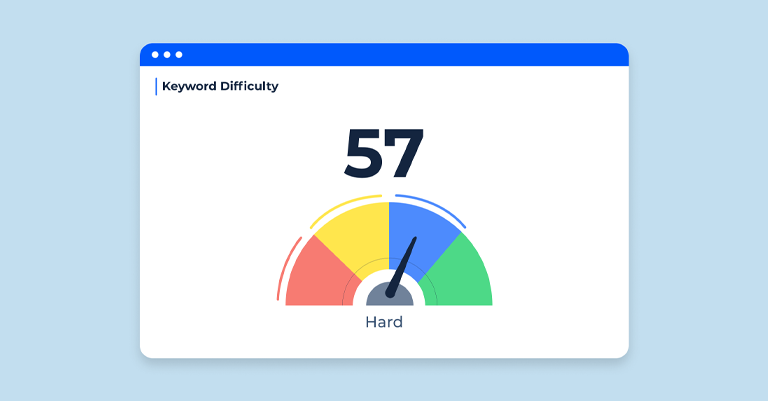Finding the right keywords for your SEO strategy is essential to outranking your competitors. Competitive keyword analysis allows you to uncover the terms your competitors are ranking for and discover keyword opportunities they may be missing. This guide will show you how to conduct a thorough analysis to boost your rankings and grow your organic traffic. By following these steps, you’ll be able to find high-performing keywords that will put you ahead in search results.
What is Competitive Keyword Analysis?
Competitive keyword analysis involves studying the keywords that your competitors are ranking for and using that data to optimize your own SEO strategy. By identifying which terms are driving traffic to competitor websites, you can find keyword opportunities that you may have missed. This type of analysis helps you understand the competitive landscape and focus on the keywords that will bring the best results.
Why is competitive keyword analysis so important? It provides insights into the search behaviors of your target audience, helping you to optimize your content to better meet their needs. It also allows you to see gaps in your competitors’ strategies, giving you a chance to fill those gaps with content that ranks higher. Ultimately, a well-executed competitive keyword analysis gives you a roadmap to outranking competitors in search engine results, leading to more traffic and higher conversions.
How to Conduct a Competitive Keyword Analysis

To perform a competitive keyword analysis, follow these steps to identify which keywords your competitors are using and how you can outperform them.
First, identify your competitors—both direct and indirect. Then, use keyword research tools to find out what keywords they are ranking for. Once you have gathered this data, analyze the keyword performance by looking at search volume, difficulty, and ranking potential. Finally, refine your keyword list by choosing terms that align with your content and SEO goals.
By following these steps, you’ll gain a comprehensive understanding of your competitive landscape and how to improve your SEO strategy.
Identify Your Competitors
Before you start analyzing keywords, it’s essential to know who your competitors are. These may include direct competitors—businesses that offer similar products or services—or indirect competitors who serve the same audience.
Start by searching for the main keywords in your industry and see which businesses appear at the top of search results. You can also use tools like SEMrush or Ahrefs to find competitors based on keyword performance. Pay attention to companies that consistently appear in the top positions, as these are your strongest competitors. Identifying your key competitors will give you a starting point for your keyword analysis.
Use Keyword Research Tools
Once you’ve identified your competitors, it’s time to use keyword research tools to find out which keywords they are ranking for. Tools like Ahrefs, SEMrush, and Moz can help you compare your keyword performance with your competitors.
When using these tools, focus on metrics like search volume, keyword difficulty, and ranking positions. These data points will give you a clearer idea of which keywords are bringing in traffic and which ones are more difficult to rank for. By analyzing your competitors’ keywords, you can also find gaps in their strategy—keywords they are not targeting but are relevant to your content.
Analyzing Keyword Difficulty and Search Volume

Keyword difficulty and search volume are two crucial factors when analyzing potential keywords. Keyword difficulty measures how challenging it is to rank for a keyword based on the competition. Search volume, on the other hand, refers to how many people are searching for that term each month.
For a successful keyword strategy, it’s important to find a balance between difficulty and search volume. High-difficulty keywords might be hard to rank for, but they can drive significant traffic if you succeed. On the other hand, low-difficulty keywords may have less competition, but they often come with lower search volumes. A balanced approach ensures that you target both short-term wins and long-term ranking potential.
Understanding Keyword Difficulty
Keyword difficulty is a score that shows how hard it is to rank for a specific keyword. The higher the score, the tougher the competition. Tools like Ahrefs and Moz provide keyword difficulty scores, allowing you to quickly assess the competitiveness of a keyword.
To maximize your chances of ranking, focus on keywords with moderate difficulty scores. While high-difficulty keywords can be tempting due to their traffic potential, it’s often more realistic to target moderately competitive terms. This gives you a better chance of ranking higher in search engine results.
Evaluating Search Volume
Search volume refers to the number of times a keyword is searched for each month. High search volume means more potential traffic, but it also usually means more competition. Low search volume keywords, on the other hand, may be easier to rank for but won’t drive as much traffic.
When evaluating search volume, aim for a balance. Keywords with a moderate to high search volume and manageable competition are your best bet. They can help you attract steady traffic without being too difficult to rank for. Keep in mind that search volume can vary over time, so regularly reassessing your keywords is important.
Refining Your Keyword List

Once you’ve gathered data on your competitors and analyzed keyword difficulty and search volume, the next step is refining your keyword list. Start by narrowing down the keywords that align best with your content goals and audience. Look for a mix of high-traffic and low-competition keywords to ensure a balance between immediate wins and long-term growth.
Your refined keyword list should include a variety of keyword types—such as long-tail keywords and location-based terms. Long-tail keywords tend to be more specific, have lower competition, and often convert better because they match user intent more closely.
Prioritizing Long-Tail Keywords
Long-tail keywords are longer, more specific phrases that users search for. While they may have lower search volumes than short, broad keywords, long-tail keywords are often easier to rank for and can lead to higher conversion rates.
For competitive keyword analysis, long-tail keywords are especially important because they allow you to target niche markets that your competitors might overlook. These keywords often reflect specific user intent, making them ideal for capturing targeted traffic. Prioritizing long-tail keywords can be a great strategy for gaining an edge over your competition.
Tracking Your Competitors’ Keyword Performance Over Time
SEO is an ongoing process, not something you can set and forget. To maintain your competitive edge, tracking your competitors’ keyword performance over time is crucial. The digital landscape is always evolving—competitors may adjust their strategies, new competitors may enter the market, and search engine algorithms frequently change. Regularly monitoring how your competitors’ keywords perform allows you to stay updated on these shifts and adapt your approach accordingly.
Why Regular Tracking is Essential
SEO is not static – your competitors are constantly evolving their strategies to stay relevant. Regular tracking ensures that you don’t fall behind in the rankings. Keeping an eye on your competitors’ keyword performance allows you to notice shifts in their strategy, helping you adjust before their changes affect your traffic. With frequent updates from tools like SEMrush, Ahrefs, or Moz, you can stay on top of new trends and discover emerging keywords your competitors are targeting.
Final Thoughts on Competitive Keyword Analysis
Competitive keyword analysis is an essential part of any successful SEO strategy. By studying your competitors’ keywords, you can uncover valuable insights and discover new opportunities to improve your rankings. Through careful analysis of keyword difficulty, search volume, and competitor performance, you can refine your keyword list to focus on terms that will drive the most traffic. Regularly monitoring your competitors ensures that you stay ahead of trends and can adapt to changes in the search landscape. Implementing these strategies will help you find the best keywords to grow your website’s visibility and achieve long-term SEO success.




